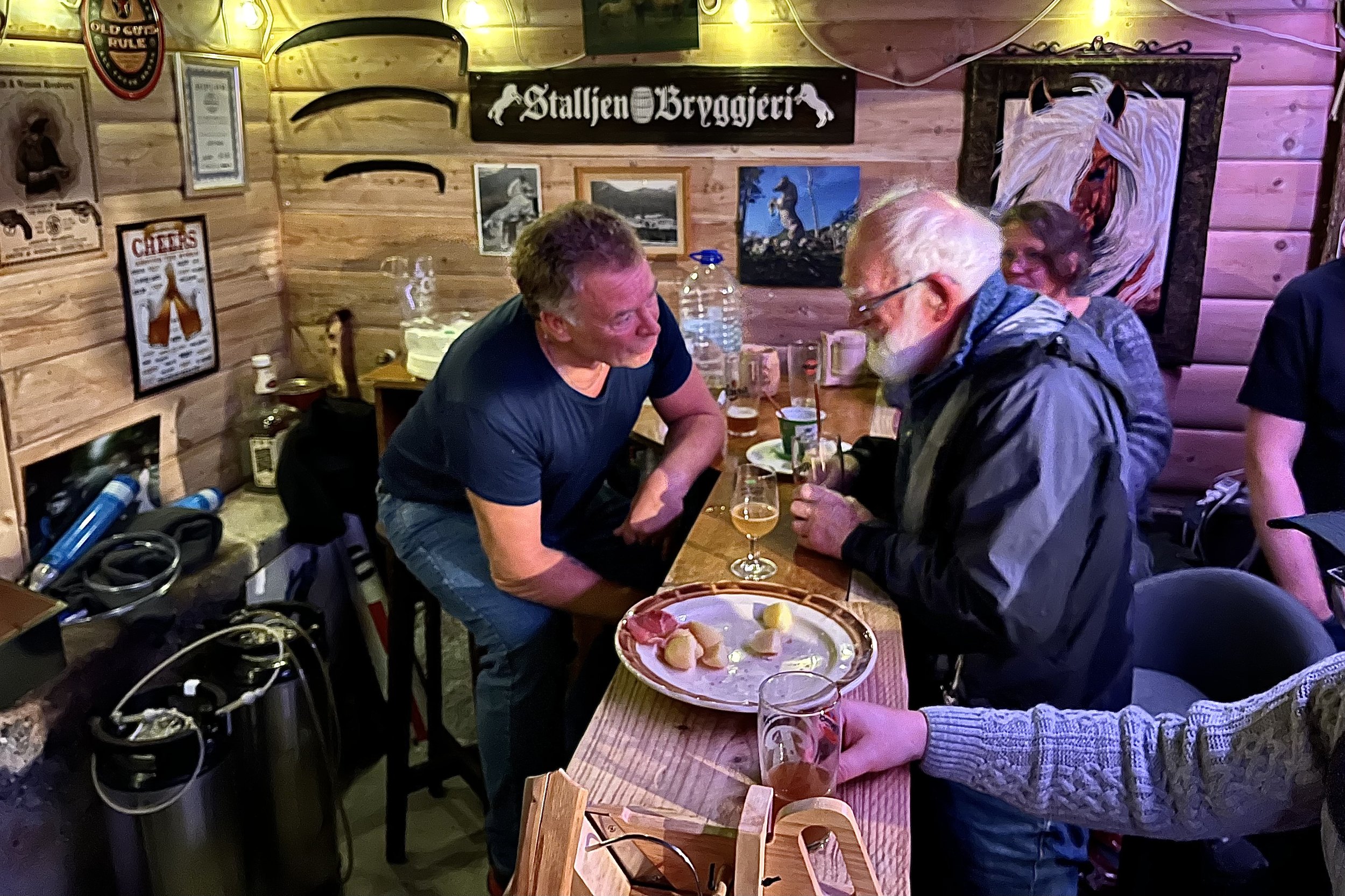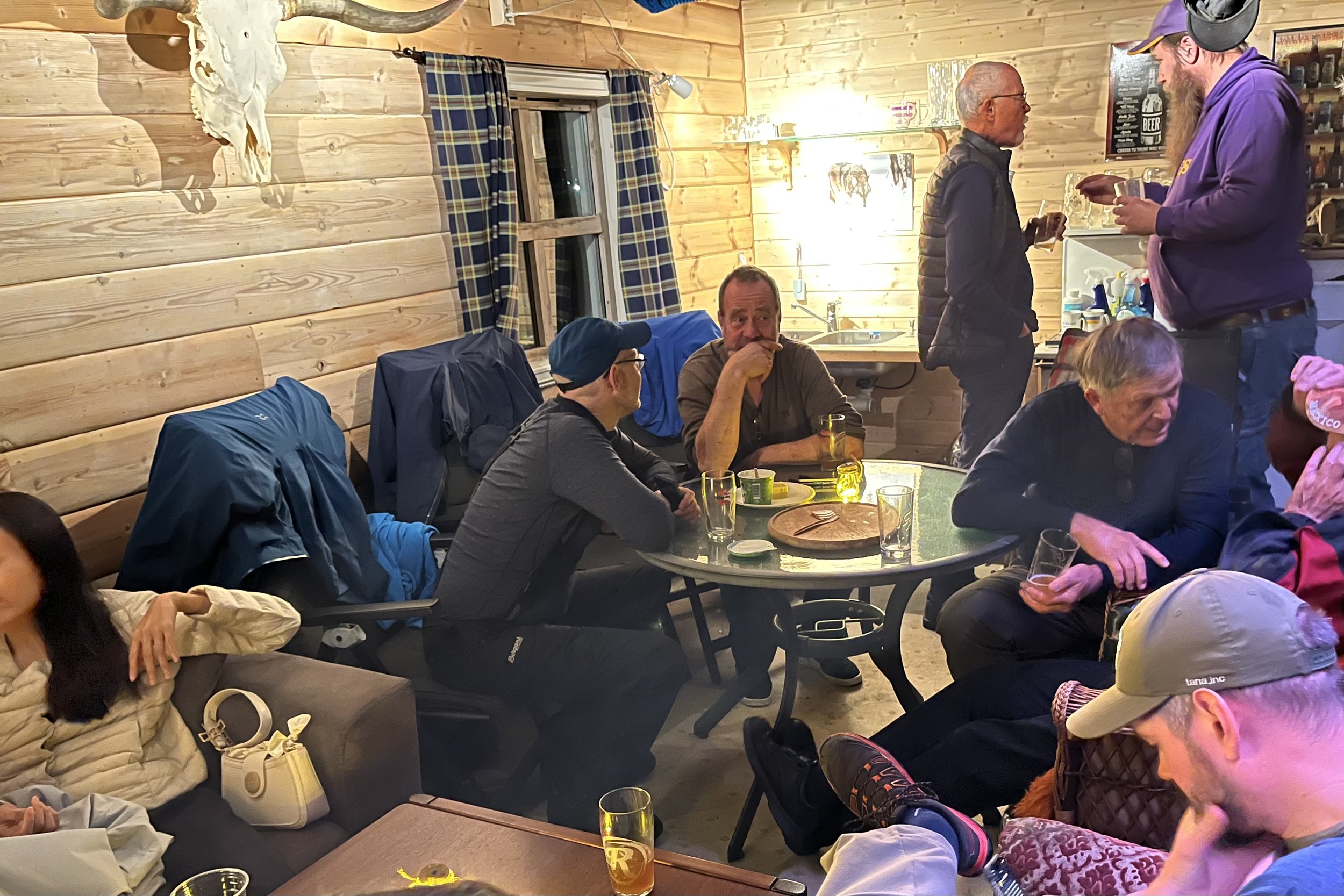It's Hard to Get There, But Kornølfestival is a Bucket List Adventure
The view of Lake Hornindal from Grodås.
Hornindal, Norway is remote. It took me two flights and fifteen hours to get to the island town of Ålesund, halfway between Bergen and Trondheim. The next day, we needed another three hours and a ferry ride to reach the small town of Grodås on the shores of Lake Hornindal. If that didn’t feel remote enough, Grodås itself is tiny, with a single hotel and restaurant, a gas station, grocery, and a smattering of slate-roofed homes. While there’s normally not a lot to do, one weekend a year Grodås becomes the center of the rustic beer world. A mile’s stroll down the road from the hotel you find its beating heart in a gymnasium where dozens of brewers pour and discuss their beer with the few hundred attendees. Yes, just a few hundred. This is the littlest big event I’ve ever attended.
Yet the size of the event, its remote location, and the intimacy of the various events are all intentional. It’s what makes a the fest such a special event. The experience allows anyone who attends to get to know the farmhouse brewers and, more than that, spend time drinking beer with them and learning more about what they do. Most fests are merely about tasting, but Kørnolfestival allows you to learn about the beer and brewing tradition and get to know its central practitioners.
Not Just a Fest
The evening we arrived, we attended an “oppskåke,” a party held after the kveik is transferred to the serving cask. The way Lars Marius Garshol described it, it wasn’t a planned event so much as an unavoidable one. “In the old days, people would see when a particular farm was brewing. They would note the tuns being laid in the brook, the smoke from the brewhouse, and so on. And since the fermentation time was usually the same every time, they knew what evening to show up in the brewhouse for the party.” The event we attended was held in one-time brewhouse that had been converted into a kind of drinking cabin, complete with a wood stove, chairs, and a bar.
We all received some raw ale on our way in, heard a brief welcome from Stig Seljeset, and then settled in for a few hours of sipping and chatting. Stig put out some smoked meat, and we would make our way back to the bar for a refill when we ran low. Two fun facts: first, almost everyone in Norway speaks English. This makes these kinds of events incredibly easy for the American. Second, and I’ve never heard any explanation for this, when homebrewers pour you a glass of beer, they fill it halfway, or about six ounces if the glass is small. In neither Voss nor Hornindal did anyone ever pour me a full glass of beer. Perhaps this is because these beers are often strong—but that doesn’t quite explain it because not all the beers are strong. Maybe it’s so you have an excuse to return more often to the tap and chat up the brewer.
Oppskåke
Oppskåke
The tasting portion of the fest.
The next day, we all got to witness a session of brewing, which I wrote about here. (And here’s a description of how they do it in Voss, which includes a video of the process.) This is a must whether you’re a homebrewer or not—personal brewing knowledge isn’t important. You spend the day watching the process unfold, and you can ask as many questions as you like. It’s very chill and inviting. Oh, they do have a brewing demonstration at the festival itself, too, but this is where you see brewing happen in its native environment.
Finally, the fest offers a full program of talks and discussions. These happen during the tasting part of the festival (see below), but that’s not really a problem. Half the brewers leave their tables to go listen, so you’re not missing out if you attend them. I was invited in part to give a speech, and it was great to see the brewers I’d met gather to listen. What I found interesting about these talks was how they acted as information-sharing for the brewers themselves. The festival has only been going since 2016 (I think), and it has become a hub for the brewers to learn what other brewers are doing—and to hear what outsiders like me are making of their beer. The talks deepen that sense of community.
Jørund Geving
Thor Humberset
Finnish brewers—Viking Age Brew author Mika Laitinen at right
Tasting the Beer
The kind of people who read blogs like this one will almost surely have encountered a kveik-yeast beer. Lallemand, Omega, White Labs, Imperial, Escarpment, and Yeast Bay all offer varieties; they’re common enough now that breweries don’t always mention their use in IPAs or lagers. But few people have ever had the chance to taste a real kveik farmhouse ale. A number of people have attempted to describe them over the years, but I have to say that doesn’t prepare you. With their fruity yeasts, they are clearly ales, but the other flavors are unfamiliar. Some feature a dash of juniper, but it’s far less pronounced than I expected. Most are barely carbonated, and they rarely have any kind of head. That’s less a tasting component, but it does add to the disorientation. It’s like trying to describe an orange to someone who’s never tasted citrus fruit.
What’s fantastic about the fest is that you can go table to table and sample the beer with the brewer. I literally spent 45 minutes with Jørund Geving, the smoked-ale brewer from Stjørdal, as we discussed his process and looked at photos of his malthouse on his phone. I could have spent another 45, easy. Hearing how the beers are made does allow you to get your bearings with the beer, too. I was able to understand how the alderwood smoke cures Jørund’s malt. It’s a dry, crisp smokiness, but the process doesn’t destroy the sweet Munich-malt flavors underneath the smoke. From Thor Humberset I learned about small beer, or spissøl. I caught up with Ivar Geithung, one of the long-boil brewers I’d met in Voss, and finally got to taste his beer. Stig Seljeset was my raw-ale source, and we discussed his process at length.
All of this helps you triangulate the causes of the flavors you’re tasting. My best example is the taste of raw ale, mysterious to me before I’d had a few glasses. People talk about the density of the beer, which comes from the proteins that don’t break out like they do in boiled-wort beer. They’re right; it has a soupier mouthfeel. But the real kicker is the very distinctive flavor of unboiled malt. Commercial brewer Amund Polden Arnesen tried to describe it to me when I visited his brewery, Oslo’s Eik & Tid. He uses farmhouse techniques and makes raw ale there. I had never had raw ale before that visit, so I couldn’t identify the note Amund was identifying. He described it as a “sprout” flavor—green and fresh, more vegetable than grain. Malted barley is basically a sprout, but I never put it together. The description is very apt, and eventually I found the flavor. Once I’d located it, it seemed so obvious that by the time I left the festival, I was identifying raw ales just by taste.
Being able to identify these flavors isn’t possible until you’ve got the beer in your mouth, and it’s a lot easier when you can compare the different styles. So while the tasting portion of the festival looks superficially like other fests, you are actually getting an immersive education—particularly if you stop to speak to the brewer. The size of the fest is what makes this manageable.
I know few people will have the money and inclination to travel halfway around the world to the fest, but if you’re one of those rare birds, I highly recommend it. You’ll walk away with an appreciation of this very rare, hidden brewing tradition—and probably have made a few friends along the way.


